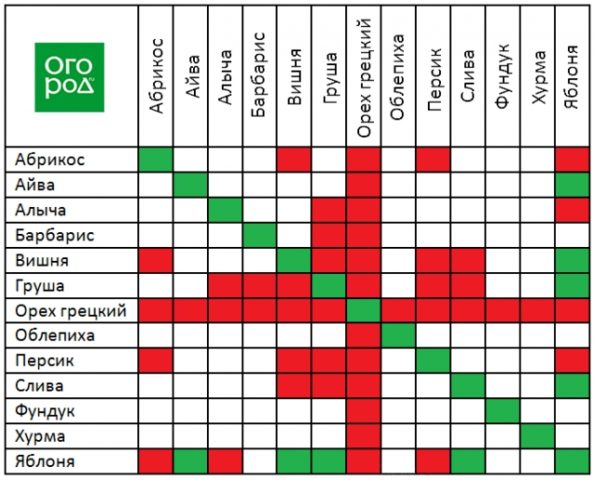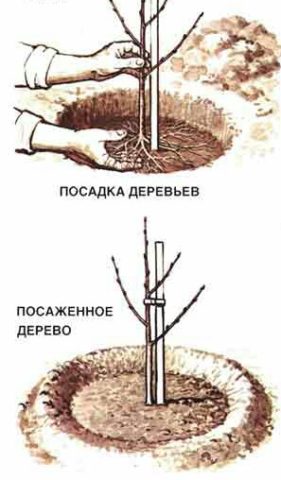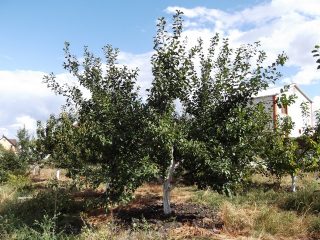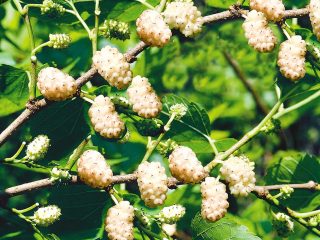Content
Plum Morning is a bright representative of a small group of self-fertile varieties that produce yellow fruits. And although it was bred relatively recently, it has already gained fame among Russian gardeners.
Breeding history of the variety
The Morning plum variety was obtained by crossing Renklode Ullens and Skorospelka red at the All-Russian Institute of Selection and Technology of Horticulture (Moscow). Already in 2001, the variety was entered in the State Register and recommended for cultivation in the Central region of the country.
Description of plum variety Morning
The height of the plum tree. Morning is average, reaching 3.5 m. The crown is rounded, slightly raised with medium foliage and thickening. Shoots are dark brown, smooth to the touch, without pubescence. The leaves are large, light green, slightly wrinkled, without pubescence.
The fruits of the Morning plum are greenish-yellow with a slight pink blush appearing on the sunny side. There is a slight waxy coating on the skin. Egg-shaped fruits grow up to 40 g. The seam is poorly developed, but clearly distinguishable. The pulp is yellow, has a pleasant aroma and sweet and sour taste, which received a tasting rating of 4 points out of 5. It has fine fibers, while very juicy.
The Morning variety is grown mainly in Moscow, Ryazan, Kaluga, Tula and other regions belonging to the Central region of Russia.
Characteristics of plum Morning
For clarity, the characteristics of the yellow plum Morning are presented in the form of an assessment of the most important varietal indicators.
Drought resistance, frost resistance
Drought resistance is assessed as medium. The tree also cannot boast of special frost resistance: a strong frost attack on branches and shoots has been noticed. Therefore, in areas with severe winters, the Morning variety is not grown. The main feature of this plum is its tendency to quickly recover and build up damaged parts. Despite the fact that in winter during severe frosts the tree may suffer, the spring moods of the weather are not afraid of it. During frosts during this period, flower buds are practically not damaged.
Plum Pollinators Morning
Plum Morning is absolutely self-fertile, therefore it does without any pollinator. The variety blooms at the standard dates for the culture (in mid-May), and gives fruits early, already in early August. Ripening of plums is uneven.
Productivity and fruiting
The yield of the Morning variety is quite high, up to 15 kg of plums are harvested from one plant, and in particularly successful years, even 30 kg of tasty bright fruits. This indicator is considered stable, since low yields are observed only once every 4 years.
Plum fruiting occurs early, at 4-6 years of life, the tree gives its first fruits. Morning lives until the age of 21, after which it ceases to bear fruit.
Scope of berries
The fruits of the Morning plum can be used in various ways, they are suitable for fresh consumption, conservation and freezing.Gardeners who prepare preparations for the winter note that jam is made especially delicious from these plums.
Disease and pest resistance
The yellow plum variety Morning is highly resistant to common stone fruit diseases: fruit rot, clotterosporia (perforated spot). Infestation by pests is average, the variety is relatively resistant to moth and aphid invasions.
Advantages and disadvantages of the variety
Among the benefits of yellow plum Morning are:
- self-fertility of the variety;
- flavoring and commercial characteristics of berries;
- easy separation of the bone from the pulp;
- dry separation of fruits;
- resistance to pests and diseases;
- the versatility of using the harvested crop;
- stable and high yield.
The main and only drawback of the Morning plum is the average winter hardiness. The tree does not tolerate frosty winters and thaws.
Landing features
Plum cultivation Morning begins with its planting, which has some peculiarities.
Recommended timing
Preferred planting dates for plums Morning depend on the condition of the root system. Seedlings with open roots are planted in the spring before bud break. With closed ones - in spring and autumn, from September to October. If the seedling was acquired late, it can be dug in, and transplanted to a permanent place in the spring.
Choosing the right place
Like other types of plums, the Morning variety fully reveals its potential only when grown in sunny, calm areas without lowlands in which moisture can accumulate. If these standard conditions for growing plums are not followed, the Morning starts to hurt and gives low yields. The tree prefers loose, fertile soils with neutral acidity.
What crops can and cannot be planted nearby
When choosing a planting site for plums, one more factor must be taken into account - compatibility with other crops growing in the garden. Do not plant Morning plum next to other stone fruit trees, as well as pome fruit trees. You can divide the garden plantings of these crops with black currant bushes. Raspberries and gooseberries are considered neutral neighbors for plums.
Selection and preparation of planting material
When choosing a plum sapling, it is necessary to pay attention to the presence of any mechanical damage, stains and traces of pests. If they are present, it is better to refuse the purchase. The age of the seedling is considered one of the most important criteria. Instances at the age of one or two years old take root better than adult plants. If it is possible to assess the state of the root system, then it is necessary to look at its development. A large number of strong roots serves as a guarantee of survival.
Depending on which type of root system belongs to - closed or open, pre-planting preparation can be carried out. Plum yellow Morning with bare roots, if necessary, soak in water for 12-24 hours (if they are dry).
Landing algorithm
Planting the Morning variety is carried out according to standard instructions:
- In a dug hole with dimensions of 60 × 60 cm, 2 buckets of humus, 100 g of potassium sulphide, 200 g of superphosphate and 300 g of ash are laid in advance.
- The seedling is placed vertically, the roots are straightened.
- The voids in the pit are filled with soil so that no air space is formed. At the same time, make sure that the root collar of the plum is 7 cm above ground level.
- They trample the ground around the buried tree, form a hole with sides and spill it. For gardeners with experience in planting fruit trees, planting the Morning will not cause problems.
Plum follow-up care
The care of the yellow plum Morning includes the standard operations carried out when growing a crop:
- watering should be sufficient for the survival of the seedling, the soil should not be allowed to dry out and water stagnation;
- cut the top of the tree only during spring planting;
- top dressing is not needed in the first two years of a plum's life if it was planted in fertilized soil;
- preparation for winter - the event is very important so that the plum does not freeze, it is covered with spruce branches and the trunk circle is mulched;
- the trunk is wrapped with a fine mesh to protect it from rodents.
Caring for the Morning variety is unpretentious, but obligatory.
Diseases and pests, methods of control and prevention
Diseases and pests of plum. Morning is summarized in tables.
Table 1 - Possible diseases of the plum
Name of the disease | Ways to fight | Preventive measures |
Scab | Spraying after harvesting with Skor, Raek, Horus preparations. | Spraying before bud break and after flowering with 1% Bordeaux mixture. |
Moniliosis | Spraying during flowering with Skor, Switch, Fitoflavin preparations. Traditional methods: spraying in the spring with a solution of salt and ash, an aqueous solution of iodine. | Orderly and timely application of phosphorus-potassium fertilizers, mandatory collection of garbage, diseased fruits from the tree and the trunk circle. |
Red spot | Application before and after flowering, as well as after harvesting the preparations Topaz, Skor, Oksikhom. | Until the buds bloom, the tree and the trunk circle are treated with a 1% solution of copper sulfate. |
Table 2 - Pests of yellow plum Morning
Pest name | Ways to fight | Prophylaxis |
Plum Gall Mite | Processing after flowering with a solution of Tedion or colloidal sulfur. | Planting plums away from almonds, peaches, birches and other pest-affected crops. |
Plum sawfly | From folk methods, they use wormwood or coniferous infusion. Chemical processing is carried out with the drugs Lepitocid, Entobacterin. | Digging in the fall of the trunk circle, treatment with special insecticide preparations in early spring before bud break. |
Conclusion
Plum Morning is one of the most unpretentious varieties of culture, the cultivation of which does not cause difficulties even for beginner gardeners. Paying special attention to preparing plums for winter, you can collect high yields from it almost every year.
Testimonials
Gardeners leave the following reviews about the yellow plum Morning.













